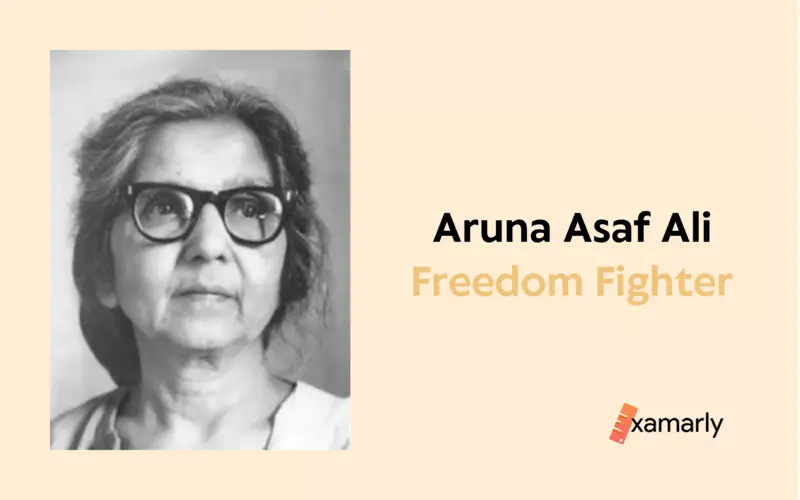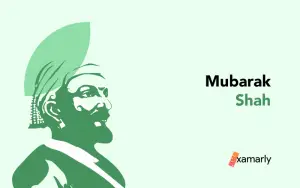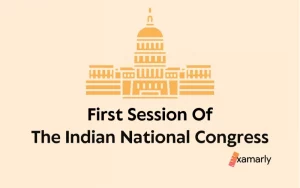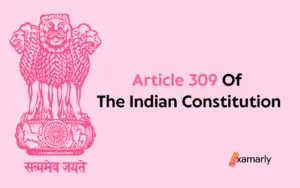History has witnessed many legendary women who spoke for themselves and countless others even when forces were out to silence their thoughts.
These female freedom fighters set out an example and inspired many other women to be strong, fearless, and selfless. One among these unsung female heroes of the Indian Independence struggle was Aruna Asaf Ali.
During the Quit India Movement, Aruna Asaf Ali played a pivotal role in the struggle for Indian independence. As part of the Quit India Movement in 1942, she helped keep the revolutionary flame burning by hoisting the Indian flag at Gowalia Tank maidan.
She was a powerful and steadfast advocate of women’s equality and refused to be confined by religious intolerance. Post-independence, Aruna Asaf Ali took up the cause of India’s social development and became a political activist, mayor, and publisher.
The “Grand Old Lady of Indian Independence” title is in large part due to her efforts.
In the context of the UPSC IAS Exam, it is essential that you know about the fighters who were pertinent to the Indian freedom struggle. This article will provide information about Aruna Asaf Ali and her role during and after the post-Indian Independence Movement.
Aruna Asif Ali’s Childhood
Aruna Ganguly was born on July 16, 1909, to a family of Bengali Brahmins who had moved to Punjab. Upendranath Ganguly, her father, lived in the United Province but was originally from the Eastern Bengal district of Barisal (now Bangladesh).
He was a restaurant owner. Ambalika Devi, her mother, was the daughter of renowned Brahmo leader Trailokyanath Sanyal. Aruna’s sister, Purnima Banerjee, served in the Indian Constituent Assembly.
She attended All Saints’ College in Nainital after growing up at Lahore’s Sacred Heart Convent. She started her teaching career at Gokhale Memorial School in Calcutta after graduating from university. At the Congress party headquarters in Allahabad, she spoke with Asaf Ali.
Her desire to marry Asaf Ali faced parental opposition on religion and age as Asaf Ali was a Muslim almost 20 years older than her. Despite the domestic opposition (especially from her paternal uncle), they were wedded in 1928.
Aruna’s Role in the Freedom Struggle
“He who is not courageous enough to take risks will accomplish nothing in life.” – Aruna Asaf Ali
It can be said without a doubt that Aruna Asaf Ali lived up to her words. Her accomplishments and contribution to the Indian freedom movement are unforgettable.
When a number of prominent leaders including Mahatma Gandhi and Jawaharlal Nehru were arrested, Aruna led the Quit India Movement.
Through different phases in her life, she went on to adorn the role of educator, activist, freedom fighter, mayor, publicist, and above all a fearless woman.
Let us look into these three stages of her social and political career.
Early Association with the Indian Independence Movement
Aruna Asaf Ali’s association with the freedom struggle began after her marriage. Asaf Ali was an active participant in the Indian National Congress.
Through him, Aruna got introduced to many political leaders and soon she too evolved into an Indian National Congress member.
Thereon, Aruna Asaf Ali plunged into the freedom struggle. She addressed public meetings and led marches during the Salt Satyagraha in 1930. The British Government arrested her and accused her of being a “vagrant.”
This meant that she was not released when other political prisoners were released following the Gandhi-Irwin pact. In 1931, following the Gandhi-Irwin pact, she was denied bail.
A probable reason was that British authorities were concerned about Aruna agitating the masses outside the jail into revolution.
They did not realize that Aruna had a large influence even among her inmates. Other women prisoners refused to leave unless Aruna was released. Later, Gandhi had to intervene. Following a public agitation, Aruna was released.
A year later, she was arrested again and imprisoned in Tihar. Here, she embarked on a hunger strike mandating equal and proper treatment of political prisoners.
Her efforts were not in vain. Conditions improved for political prisoners but Aruna was put into solitary confinement at Ambala jail. She was not as active as before after her release until the Quit India Movement demanded her active participation.
Ascend to the Spotlight During the Quit India Campaign
The Quit India movement was a significant milestone in Indian independence history. At its Bombay session in 1942, the INC Committee launched the “Quit India” movement.
To dampen the intensity and success of this movement, the British intervened and arrested many of its major leaders, weakening the Quit India movement.
Thus, when the British put Nehru and Gandhi in jail, 33-year-old Aruna selflessly stepped into the leadership role. She was well aware that in the absence of a leader, the movement would frail away.
So, she supervised the remaining session of the INC and heroically hoisted the national flag at Gowalia Tank maiden in Bombay. This boosted the Independence Movement and she was applauded as the Heroine of 1942.
She quickly went into hiding after an arrest order for her was issued. In 1942, she did not sit still and launched an underground movement. She worked with Ram Manohar Lohia to run the Congress Party’s monthly magazine, Inquilab.
Her writings argued for the need for a revolution. This fueled the British government’s pursuit of her, and they declared a 5000 rupee prize for her catch.
Despite Gandhi’s letter asking her to surrender and donate the reward money to the Harijan cause, Aruna did not come out of hiding until the arrest warrant against her was revoked.
Post-Independence Life and Work
After Independence, Aruna became an active associate of the Congress Socialist Party, a wing of the Congress Party reserved for leaders with a socialist cause.
But the developments within the party did not meet her expectations and she soon went on to join a new party called the Socialist Party.
However, she and Edatata Narayanan soon left this party. Both of them joined the Communist Party of India and participated in its activities during the 1950s.
She played a crucial role in the formulation of the National Federation of Indian Women, a wing within the CPI party. In 1958, she became the city of Delhi’s first female mayor. She held the position with utmost diligence and was responsible for major civic reforms.
But eventually, party politics drained her out and she resigned from the post and the Communist Party in 1958. She swore to never take up another government job or contest elections in the future.
In that year, she along with Narayanan founded Link Publishing House. They launched a daily newspaper called the Patriot and another called the Link, which was a weekly.
Leaders like Jawaharlal Nehru, Krishna Menon, and Biju Patnaik enthusiastically supported these publications. She later left the publishing industry due to politics within the place.
She died on July 29, 1996, at the age of 87, in New Delhi.
Legacy of Aruna Asaf Alif Freedom Fighter
Aruna Asaf Ali received the following:
- the International Lenin Peace Prize in 1964.
- the Jawaharlal Nehru Award for International Understanding in 1991.
- the Padma Vibhushan, the second-highest civilian honour in India, during her lifetime in 1992.
- the Bharat Ratna, the highest civilian honour, posthumously in 1997.
In 1998, a stamp commemorating her was issued. Aruna Asaf Ali Marg in New Delhi was named in her honour. Every year, the All India Minorities Front presents the Dr Aruna Asaf Ali Sadbhawana Award.
Conclusion
Aruna Asaf Ali’s Independence and post-independence persona is impressive and deserves to be studied as she played an important role in the freedom movement.
She was a pioneer of human rights and women’s equality. She stood tall when India needed her and fearlessly fought the British rule and any corruptive force that came her way.
Thus, it is a must that every Indian knows about Aruna Asaf Ali, a fearless freedom fighter who is occasionally forgotten.
FAQs
Q1. What was the Occupation of Aruna Asaf Ali?
She was an educator, publisher, and political activist.
Q2. Who was the first Mayor of Delhi?
Aruna Asaf Ali was the first mayor of Delhi.
Q3. Who was known as “The Political Children of Gandhi But Recent Students of Karl Marx”?
Leaders like Arun Asaf Ali and Jayaprakash Narayan were called so as they advocated for revolution rather than pertaining discussions on violence and non-violence.
When was she born and when did she pass away?
Aruna Asaf Ali was born on 16 July 1909 and passed away on 29 July 1996.
What are some of her notable contributions to society?
Aside from her role in the Indian independence movement, Aruna Asaf Ali was also known for her work in the fields of education and women’s empowerment. She was a founding member of the All India Women’s Conference and worked to improve the status of women in India.






